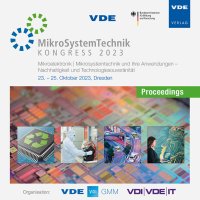Fabrication of IC substrates utilizing semi-additive copper deposition and a machine-optimized anode control system
Konferenz: MikroSystemTechnik Kongress 2023 - Kongress
23.10.2023-25.10.2023 in Dresden, Deutschland
Tagungsband: MikroSystemTechnik Kongress 2023
Seiten: 5Sprache: EnglischTyp: PDF
Autoren:
Kahle, Ruben; Gerberich, Michael; Ostmann, Andreas (Fraunhofer IZM, Berlin, Germany)
Inhalt:
A prerequisite for the production of high-performance electrical systems, for example for the realization of AI functions in smartphones, are miniaturized circuit carriers (IC substrates), which are equipped with state-of-the-art components. A core process for the production IC substrates using semi-additive processes (SAP) is the electrodeposition of copper to create conductors and contacts. For the electrodeposition of copper from electrolytes, current flows between an anode and the structured surface to be coated as the cathode. Plane metal grids of stretched titanium with inert coatings such as platinum, niobium, iridium and mixed oxides are used as anodes. If flat, large-format printed circuit board panels are copper plated, the current density often increases locally at the edge areas. In addition, mounting concepts and the system technology for filtration and flow cause flow differences at the edges and on the surface. As a result, the copper thickness in the center of the board differs from that at the edges and corners. With the use of a segmented anode in conjunction with electronic control of the local anode duty cycle and the switching time, the current density per time unit at the anode and cathode can be adjusted in such a way that the layer thickness is uniform over the entire printed circuit board. To control the current of individual segments or groups and thus the local current density at the anode, elaborate test series are usually carried out. This paper shows how the processing of data from test series (measurements of the copper height distribution) helps to train a neural network and generate a model. This model provides control parameters for the anode array and leads to an overall shortening of the development phase in order to reliably manufacture conductor structures below 10 µm.


